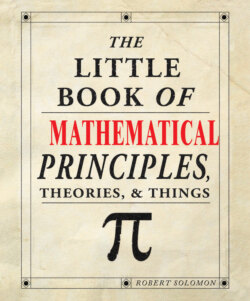Читать книгу The Little Book of Mathematical Principles, Theories & Things - Robert Solomon - Страница 27
На сайте Литреса книга снята с продажи.
3rd century BC Greece Sum of the Angles in a Triangle
ОглавлениеThe sum of the angles in a triangle is two right angles, or 180°.
_______________
For any triangle, the sum of its angles is always 180°. This result relies on a disputed axiom of geometry and is familiar from school geometry.
Take a triangle ABC and draw a line DAE parallel to BC.
Then ∠ABC = ∠DAB and ∠ACB = ∠EAC.
So ∠BAC + ∠ABC + ∠ACB = ∠BAC + ∠DAB + ∠EAC.
The left-hand side of this equation, ∠BAC + ∠ABC + ∠ACB, is the sum of the angles of the triangle.
The right-hand side, ∠BAC + ∠DAB + ∠EAC, is the sum of the angles along a straight line, which is 180°. So the sum of the angles of the triangle is 180°.
In the proof above we stated that:
∠ABC = ∠DAB and ∠ACB = ∠EAC
These pairs of angles are known as “alternate angles”. The equality of alternate angles is a consequence of the fifth postulate of Euclid concerning parallel lines. A different postulate could give a different result: it might be that the sum of the angles is less than 180°, or greater than 180°.
Summing the angles.
